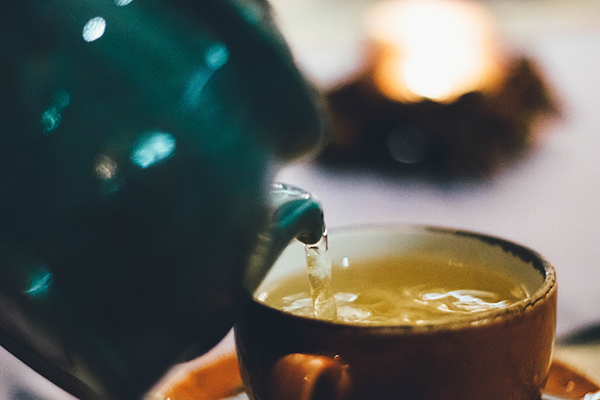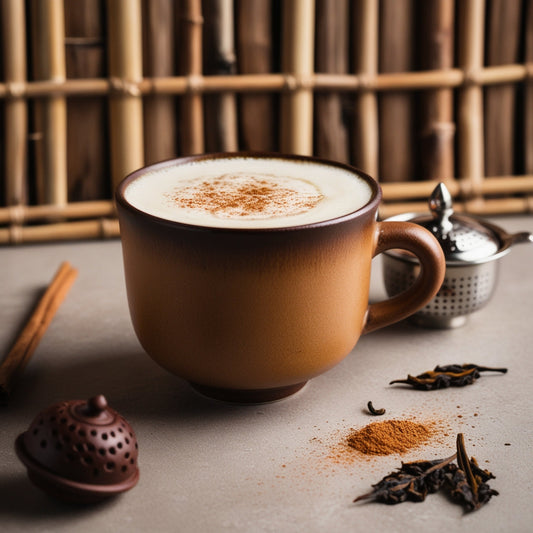Overview
Ever tried a caffeine free green tea?
Finding high-quality, caffeine-free tea can be challenging. It also has same health benefits as any regular green tea. Moreover, This blog guides you through the benefits, brewing methods, best methods that can help you to decaf and how to store it without having any quality concerns. While we talk about decaf variant we also should know about the tea bags.
Table of content
- Introduction
- Caffeine-free Green Tea
- Benefits of Caffeine free Green tea
- Brewing Methods for Caffeine free Green Tea
- Best Methods to Decaf Green Tea
- Best Methods for Storing Caffeine free Green Tea
- Conclusion
Introduction
Sip your way to relaxation with caffeine-free green tea. Decaffeination processes for tea have been around for centuries, with various methods being used throughout history. In fact, the modern decaffeination process, using solvents like ethyl acetate or carbon dioxide, emerged in the mid-20th century. However, the decaffeination process has been around in the world for centuries but it’s not known well enough. Even when decaffeinated, green tea retains its health benefits. Moreover, every green tea has caffeine but decaf green tea allows you to explore the tea with having a lower amount of caffeine. Decaffeinated green tea is an excellent option for those exploring caffeine withdrawal.
Caffeine-free Green Tea
Green tea naturally contains caffeine. But there are some which does not imply on having caffeine on their green tea. Caffeine free green tea means the tea has gone through the process of decaffeination. This type is particularly beneficial for those who are caffeine-sensitive or seeking to reduce their overall caffeine intake. It provides a soothing and refreshing alternative that can be enjoyed throughout the day without the worry of sleeplessness or jitters. Moreover, by choosing decaffeinated green tea, you can thus enjoy a healthful drink that supports your wellness goals. Sencha is also one of the best teas to try out.

Benefits of Caffeine free Green Tea
Caffeine free green tea has numerous benefits which are listed below.
1. Less caffeine:
People sensitive to caffeine might experience jitters, restlessness, headaches, and a racing heart. By all means Decaf variant is an excellent way to avoid these negative effects.
2. Antioxidant Rich:
Caffeine-free variant contains high levels of antioxidants, hence it helps against cell damage, inflammation, and oxidative stress. Moreover, antioxidants like catechins are known for their health-boosting properties.
3. Improved Cognitive Function:
Decaf variant exhibits neuroprotective effects, which can improve memory and cognitive function. Hence makes it a great choice for maintaining brain health.
4. Lower Risk of Certain Diseases:
Regular consumption of decaf can reduce the risk of certain diseases, especially cancer, type 2 diabetes, and cardiovascular diseases.
5. Relives from stress:
Both caffeinated and decaffeinated green teas contain theanine, a lovely little chemical which studies show may help you reduce mental stress.
6. Weight Management:
Green tea, especially its decaf variant, can aid in weight management by boosting metabolism and fat oxidation. A December 2018 study in the European Journal of Nutrition found that decaffeinated green tea polyphenols prevented weight gain in mice with obesity, suggesting that decaf green tea may play a role in maintaining weight.
We can try adding mint, honey, lemon, or ginger into the tea to make it more delicious and healthy.
Brewing Methods for Caffeine free Green Tea
Brewing caffeine-free green tea properly ensures you get the best flavour and health benefits. In fact here are some popular methods:
1. Traditional Hot Brew
Ingredients: Caffeine-free green tea leaves or tea bag, hot water.
Steps:
- Heat water to around 175-185°F (80-85°C). Avoid boiling water as it can scorch the leaves.
- Place 1 teaspoon of loose leaves or 1 tea bag in a cup.
- Pour the hot water over the tea.
- Steep for 2-3 minutes. Steeping too long can make the tea bitter.
- Remove the leaves or tea bag and enjoy.
2. Cold Brew
Ingredients: Caffeine-free green tea leaves or tea bag, cold water.
Steps:
- Place 1-2 teaspoons of loose leaves or 1-2 tea bags in a pitcher.
- Add cold water.
- Refrigerate for 6-8 hours or overnight.
- Strain the leaves if using loose tea or remove the tea bags.
- Serve over ice and enjoy a smooth, less bitter tea.
3. Iced Tea
Ingredients: Caffeine-free green tea leaves or tea bag, hot water and ice.
Steps:
- Brew the tea using the traditional hot brew method, but use twice the amount of tea leaves or bags.
- Once brewed, pour the hot tea over a cup filled with ice.
- Allow the ice to melt, diluting the tea to the desired strength.
- Add lemon, mint, or sweetener if desired.
4. Sun Tea
Ingredients: Caffeine-free green tea leaves or tea bag, water, glass jar.
Steps:
- Fill a glass jar with water and add 1-2 teaspoons of loose leaves or 1-2 tea bags per quart of water.
- Seal the jar and place it in direct sunlight for 3-5 hours.
- Remove the tea bags or strain the leaves.
- Refrigerate and serve over ice.
5. Matcha
Ingredients: Caffeine-free matcha powder, hot water, bamboo whisk or regular whisk.
Steps:
- Sift 1-2 teaspoons of matcha powder into a bowl.
- Heat water to around 175-185°F (80-85°C).
- Pour a small amount of hot water (about 2 ounces) into the bowl.
- Whisk vigorously in a zigzag motion until frothy.
- Add more hot water to taste and enjoy.
6. Infused Green Tea
Ingredients: Caffeine-free green tea leaves or tea bag, hot water, flavourings (e.g., ginger, lemon, mint).
Steps:
- Brew the tea using the traditional hot brew method.
- Add desired flavourings to the hot tea and let steep for an additional 1-2 minutes.
- Remove the flavourings and tea leaves or tea bag.
- Serve hot or over ice.
Best Methods to Decaf Green Tea
1. Methylene Chloride Processing:
Methylene chloride is used as a solvent to draw out the caffeine in the tea. Additionally there are two types – direct and indirect.
2. Ethyl Acetate Processing:
As well as this is considered to be a more natural process as ethyl acetate is derived from fruits. In this process, ethyl acetate is used as the solvent.
3. Carbon Dioxide Processing:
Water softened tea is pressure cooked with carbon dioxide. At higher temperatures and pressures, carbon dioxide acts as a solvent, extracting the caffeine.
Best Methods for Storing Caffeine free Green Tea
Proper storage of Decaf green tea ensures that its flavour, aroma, and health benefits are preserved. Here are five of the best methods for storing it.
1. Airtight containers:
Use airtight containers made of glass, ceramic, or metal to store your decaffeinated green tea. Also these materials do not impart any odor or flavour to the tea. This protects the tea from air, moisture, and odors, which can degrade its quality. In this case avoid plastic containers as they can retain and transfer odors to the tea.
2. Cool, Dark Place:
Store your tea in a cool, dark place away from direct sunlight and heat sources. Light and heat can cause the tea to lose its flavour and antioxidants. For example using a pantry or a cupboard away from the stove and oven is ideal.
3. Refrigeration:
For long-term storage, you can refrigerate your tea in an airtight container. This Helps in maintaining its freshness and prevents it from becoming stale.
4. Vaccum Sealing:
Use a vacuum sealer to remove air from the storage bag or container before sealing. This method is particularly useful for bulk storage.
5. Small batches:
Store your tea in smaller, individually sealed packages or containers. This can reduce the amount of tea exposed to air each time you open a container, preserving the freshness of the larger batch.

Conclusion
Caffeine-free version offers a remarkable way to enjoy the numerous benefits of green tea without the stimulating effects of caffeine. It retains the rich antioxidants, improves cognitive function, aids in weight management, and helps reduce the risk of various diseases. Given that the methods of decaffeination and proper storage are crucial to preserving the tea's quality. Additionally natural decaffeination methods can enhance its appeal. This blog has explored the many health benefits of incorporating decaf into your daily life and how it can help Caffeine withdrawal. Moreover it helps the people who are caffeine sensitive. it's a gateway to a healthier lifestyle. By choosing caffeine-free green tea, you're making a conscious decision to support your well-being and enjoy a delightful, healthful drink. If you are a tea enthusiast make sure you know well about Pu-erh tea also.
Q&A Section
Q1: Is caffeine free tea really caffeine free?
No, the tea leaves go through a decaffeination process to remove the caffeine. But it still will have trace amounts of caffeine. It typically has lower caffeine than regular green tea.
Q2: Can you still get the same health benefits as regular green tea from Caffeine free green tea?
Yes, as long as you choose a tea that is naturally processed, you can receive almost all the same benefits without the added caffeine.
Q3: Does every green tea contains caffeine?
Yes, a cup of pure green tea usually contains around 25 milligrams of caffeine per 8-ounce serving.
Q4: Can I drink caffeine free green tea at night?
Yes, Caffeine free green tea contains theanine which can help you feel calm at bedtime.






